
One of the reasons JCCS was so special this year was the special debuts that carmakers had in store. Perhaps the most significant of them all was Honda’s unveiling of the newly restored Serial One N600, the first Honda automobile built for the US market. We chatted with the man who restored this piece of history and, as it turns out, it’s by several bouts of sheer luck that this car is even with us today.
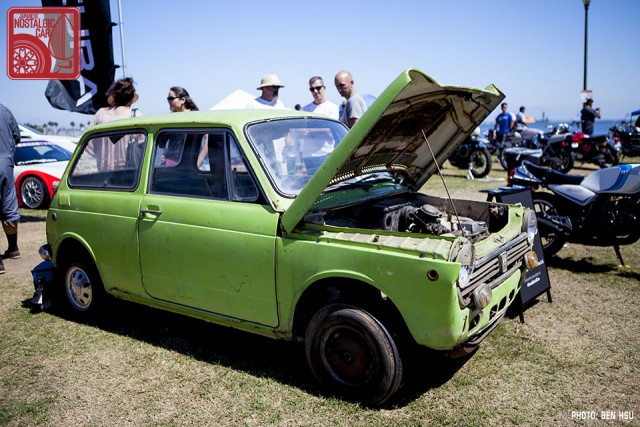
You might think that a car this significant would have lived a pampered life in Honda’s own museum, but no. For almost half a century it circulated in the wild, and as it turns out, escaped what should have been certain doom.
We first encountered the car a year ago, at JCCS 2015, when it was a nothing but a neglected heap. It had fallen into the possession of Tim “Merciless” Mings, a southern California restorer of Honda N600 and Z600 cars and vintage Honda motorcycle racer.
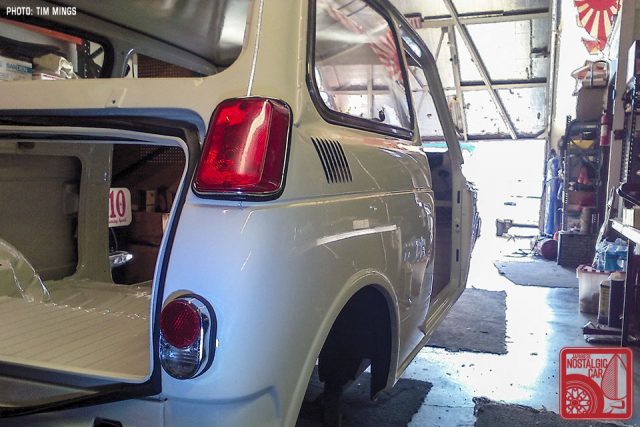
The Serial One Honda was part of a batch of 50 pre-production “winter test vehicles” imported to the US in 1967, according to Tim. They were built only to last about 20,000 miles and when that time was up, they were sent to be crushed at a scrapyard just down the street from the original American Honda headquarters.
Bob Hansen was the man in charge of the 50 testers back then, so you can imagine his surprise when he one day saw an N600 driving down the street. Today, carmakers must adhere to very strict guidelines when disposing of pre-production cars — most are rendered unregister-able for road use due to lack of VIN — but things were a little more lax back then. As it happens, the scrapyard was selling them.
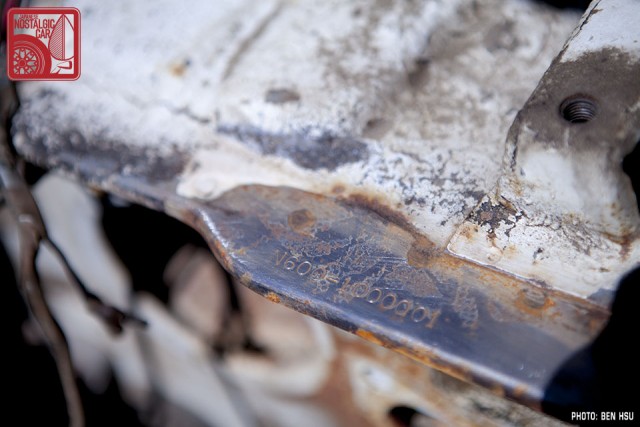
Rules are rules, though. Hansen personally went back to the yard with a sledgehammer, smashed the windshield and cam box of each car, stood there and watched as every remaining one went through the crusher. Three are known to have escaped beforehand — serial numbers 47, 44, and 01.
As the world’s foremost (and only) full-time restorer of 600cc N- and Z-series Hondas, Tim is always on the lookout for these cars. He picked up Serial One at the Pomona Swap Meet over a decade ago. Funnily enough, for years after he bought it Tim didn’t even know what he had, until one day he scraped the grime off of the serial number stamping to reveal those fateful digits: N600-1000001.
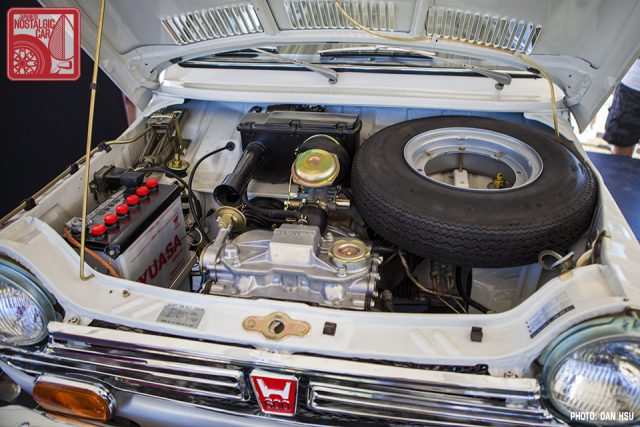
Honda then approached Mings to restore the car, and have it done in one year so it could debut at JCCS 2016. Though Tim has restored countless N600s in his life, this one proved a unique challenge. As a test mule, many of its parts were unlike their counterparts on production N600s. “If you’re missing a part for that car, you’re screwed,” Tim told us. Luckily, he had the two other pre-production cars, number 44 and 47, to refer to.
“All switchgear was junk. The car had 21,000 miles on it, and the switchgear was falling apart.” Apparently, they were made by Niles, a supplier that also made motorcycle parts for Honda. By the time the cars went to production, Honda had (wisely) changed suppliers to TEC.
With Honda involved, it was thought that maybe he company itself could help with the more difficult aspects of the restoration. An intensive search ensued through Honda’s archives in both US and Japan. However, no information on the prototypes could be found.

There were also the normal challenges that come with every resto. After finding a firm that said they could duplicate the floor mats, Tim went back and forth with the company with measurements, templates and materials. Then they waited seven weeks before telling him that never mind, they couldn’t actually make them, but they could send him the materials and he could make them himself. That’s tough to swallow when you have an important debut on the horizon.
For every headache, though, Tim’s heart would soar whenever one of the people he contracted for upholstery or powdercoating or paint came through for him. “It was a series of peaks and valleys,” he recounted.
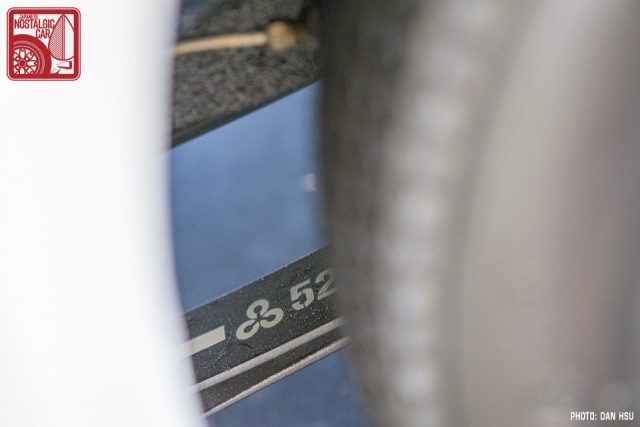
Then there were the things that no one would ever see, but Tim felt that he had to include to stay true to the car’s provenance. The prototype had unique markings on the top of the gas tank and rear leaf springs, markings that weren’t on production N600s. All, of course, were faithfully restored, even though once assembled, they’d be hidden from view.
“I hate myself for getting so tied up in the minutiae,” Tim joked, “But I forced myself to restore it to the way it was, as opposed to substituting things from the later production versions. That would have been ‘customizing.'”
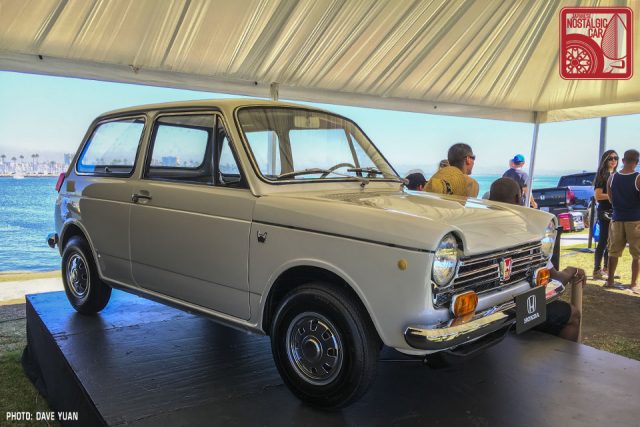
The only item that didn’t remain authentic is the paint, which is far better than it was when the car left Japan in 1967. The green was a respray, but even the original coat underneath was full of orange peel. Renowned painter John Carambia, who has worked on Pebble Beach-winning cars, was commissioned to return the car to its original white. The paint job cost $20,000 alone.
For the last three months before the JCCS reveal, Tim says he worked on the car 12 hours a day, seven days a week. “It meant more to me to make that deadline for [JCCS organizers] Koji and Terry Yamaguchi than Honda,” Tim confessed. “They do so much for the community.”

Throughout the restoration, Honda hired a film crew to follow Tim’s progress and make a series of short videos. “Silly” is the way Tim initially described all the attention. Throughout the experience of restoring the car and hearing how much importance Honda fans put on the project, though, his feelings began to shift.
Then came the day of the big reveal at JCCS. “When I pulled the cover off the car, from the tips of toes to top of my head I was awash in emotion I had never felt before in my life,” Tim insisted. “I had to get a grip. I was almost in tears.”
Honda has just released the last episode of the Serial One series. In it, you’ll see that Tim, along with electrical wizard Tad Clark, glass installer Kenny Brown, upholsterer Rogelio, plater Steve Jenson and powdercoater Joe Graham, have all signed the roof before installing the headliner.
“I will never restore another car as important as this one,” Tim says in the video. “This is it.”

“People were telling me this car is priceless,” Tim recalls, although he had a different view. “Even if it had the ashes of Mr Honda in the trunk, it’s still just an N600. I don’t know if it’ll ever be worth as much as a 2000GT.”
It’s not about the money, though. Even before he spent a year restoring it, someone made Tim an offer: $200,000 for the weathered green heap itself, and whatever it cost him to restore it on top of that. Tim turned it down. “It would be in the hands of a private collection. No one would ever see it again. I wanted this car to be in its rightful place, and that place is in the Honda collection.”






Congratulations once again, Tim – that reveal must have meant so much! If I ever find myself in the US I’ll definitely make the effort to see it up close!
What an amazing story surrounding this car and it’s lovingly restored finished product. Tim you will have to find another truly fitting project to top this one. Just to confirm, is this car going to the Ohio Honda museum?
It’s going on a national tour of sorts, to various HONDA corporate functions, then ultimately Ohio.
A great story, and Serial one also a very lucky machine !
Now what? back to normal for me……More worn out daily drivers in for servicing.
#reality #hondalife #hondalove #oldschoolhonda #mercilessmings
Oh, and you can buy a Serial One shirt at mercilessmings.com
I know where a ’64 Honda S500 resides that needs some attention, mostly reassembly with all the major work already done. Only 1353 made and less than maybe 50 still in existence. 🙂
Nice. Ah, to restore my original California TE27 Corolla SR-5. It’s certainly bent, but unbowed.
Tim – congratulations on the restoration. This might be the top JNC story ever. Number one car “found” in your garage that was supposed to be crushed and then restored to original? You truly are a Blessed man.
What a special piece of automotive history . Amazing find and meticulous restoration. Your passion is only rivaled by the perfection of your finished product . Thank you sir
Incredible work. Great to see such a good ending for a piece of automotive history.
What a fun moment to witness (at both ends, last year’s “before” and the beautiful result). Tim, it’s so great not only to see your emotional investment in this, but to know that Honda corporate has recognized your talent, skills and devotion to preserving their history. It’s also nice to see living proof that “doing what you love” is the most important job in the world. Congratulations on your opus, and thanks for letting us enjoy it.
interesting information and a long wait in the restoration process. and I am interested .. Accidentaly I have N360 and I want to restore the N360 which is now in my backyard . but I am still have a problem with the colour origanal code of N360, did not find IT with the originaL from Honda. can you help me how to find the N360 car paint color red code is?
thank you
sincerly